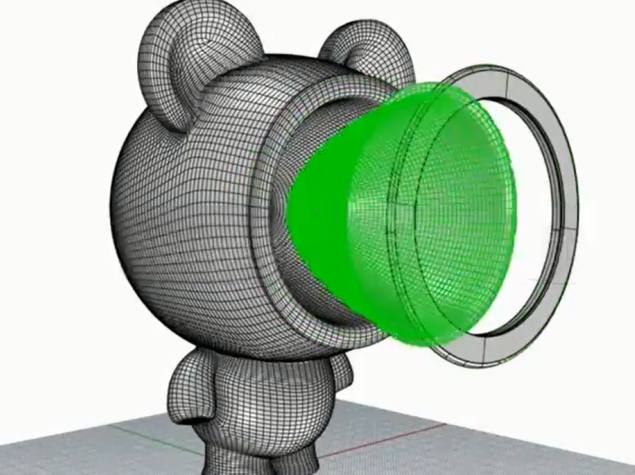3D-printed interactive speakers that can take any shape developed

The simple speakers require little assembly, but even those few manual steps might be eliminated in the future, said Yoshio Ishiguro, a Disney Research, Pittsburgh post-doctoral associate.
"In five to 10 years, a 3D printer capable of using conductive materials could create the entire piece," he said.
The method was developed by Ishiguro and Ivan Poupyrev, a former Disney Research, Pittsburgh principal research scientist.
The speaker technology could be used to add sound to any number of toys or other objects. Because the same speakers
that produce audible sound also can produce inaudible ultrasound, the objects can be identified and tracked so that they can be integrated into games and other interactive systems.
The objects can be touched or held in a user's hand without a noticeable decrease in sound quality, so simple tactile feedback may also be possible, researchers said.
The speakers are based on electrostatic speaker technology that was first explored in the early 1930s, but never widely adopted.
This type of speaker is simpler than conventional electromagnetic speakers and includes no moving parts, which makes it suitable for producing with a 3D printer.
An electrostatic speaker consists of a thin, conductive diaphragm and an electrode plate, separated by a layer of air.
An audio signal is amplified to high voltage and applied to the electrode; as the electrode charges, an electrostatic force develops between it and the diaphragm, causing the diaphragm to deform and produce sound as the audio signal changes.
This type of speaker has relatively little bass response, but does a good job of producing high-frequency sounds, such
as chirping birds, computer-generated blips and even the human voice.
Sound reproduction of up to 60 decibels is possible - an appropriate level for small objects.
"What's more, it can generate sound across the entire face of the speaker," Ishiguro noted.
That makes it possible to not only produce directional, cone-shaped speakers but also omnidirectional speakers in which the entire 3D surface emits sound.
The research is to be presented at the Conference on Human Factors in Computing Systems (CHI) in Toronto.Get your daily dose of tech news, reviews, and insights, in under 80 characters on Gadgets 360 Turbo. Connect with fellow tech lovers on our Forum. Follow us on X, Facebook, WhatsApp, Threads and Google News for instant updates. Catch all the action on our YouTube channel.
Related Stories
- Samsung Galaxy Unpacked 2025
- ChatGPT
- Redmi Note 14 Pro+
- iPhone 16
- Apple Vision Pro
- Oneplus 12
- OnePlus Nord CE 3 Lite 5G
- iPhone 13
- Xiaomi 14 Pro
- Oppo Find N3
- Tecno Spark Go (2023)
- Realme V30
- Best Phones Under 25000
- Samsung Galaxy S24 Series
- Cryptocurrency
- iQoo 12
- Samsung Galaxy S24 Ultra
- Giottus
- Samsung Galaxy Z Flip 5
- Apple 'Scary Fast'
- Housefull 5
- GoPro Hero 12 Black Review
- Invincible Season 2
- JioGlass
- HD Ready TV
- Laptop Under 50000
- Smartwatch Under 10000
- Latest Mobile Phones
- Compare Phones
- Realme Narzo 90x 5G
- Realme Narzo 90 5G
- Vivo S50 Pro Mini
- Vivo S50
- OPPO Reno 15c
- Redmi Note 15 5G
- Redmi Note 15 Pro 5G
- Redmi Note 15 Pro+ 5G
- Asus ProArt P16
- MacBook Pro 14-inch (M5, 2025)
- OnePlus Pad Go 2
- Poco Pad M1
- Just Corseca Skywatch Pro
- Honor Watch X5
- Acerpure Nitro Z Series 100-inch QLED TV
- Samsung 43 Inch LED Ultra HD (4K) Smart TV (UA43UE81AFULXL)
- Asus ROG Ally
- Nintendo Switch Lite
- Haier 1.6 Ton 5 Star Inverter Split AC (HSU19G-MZAID5BN-INV)
- Haier 1.6 Ton 5 Star Inverter Split AC (HSU19G-MZAIM5BN-INV)
















